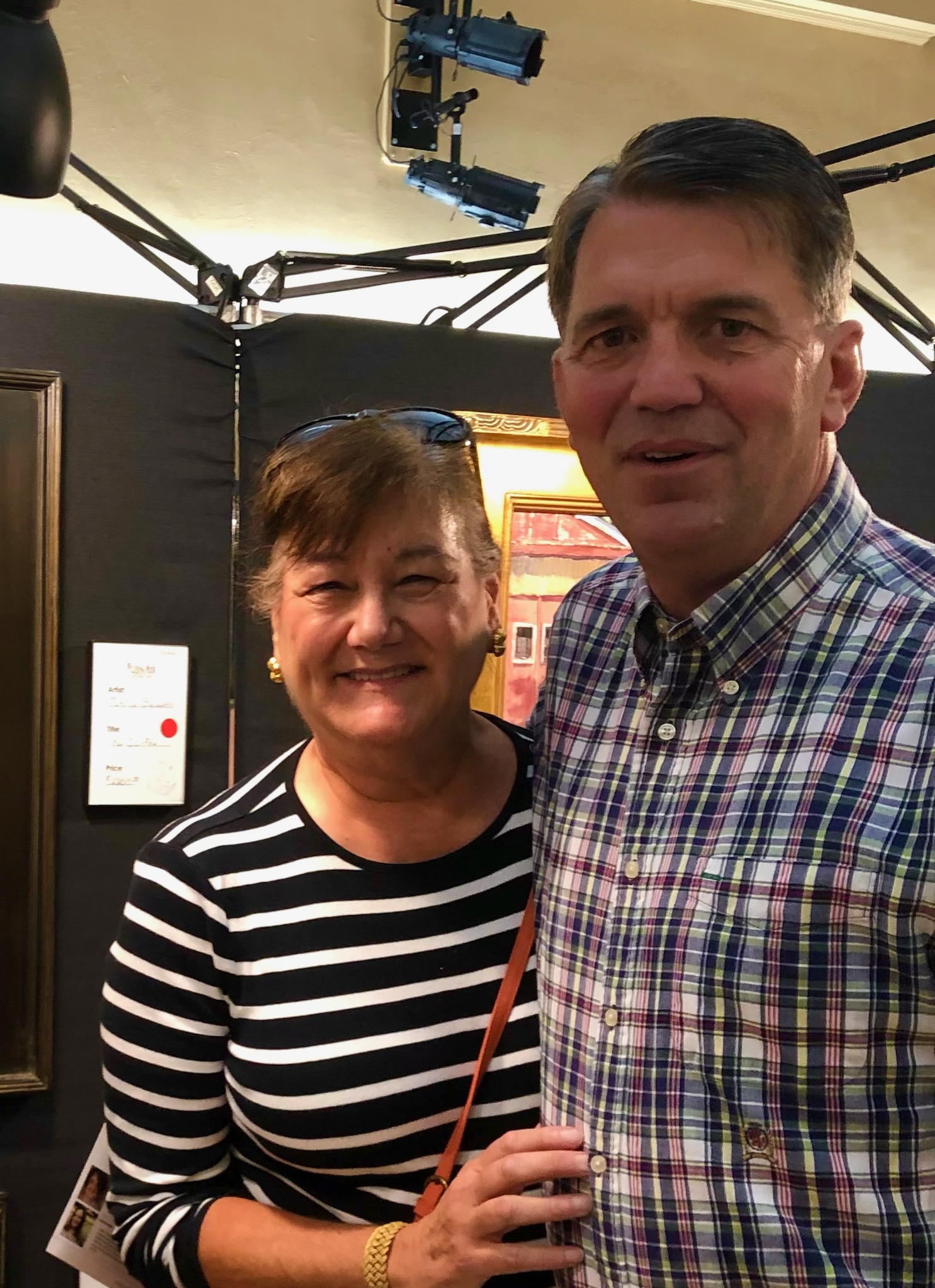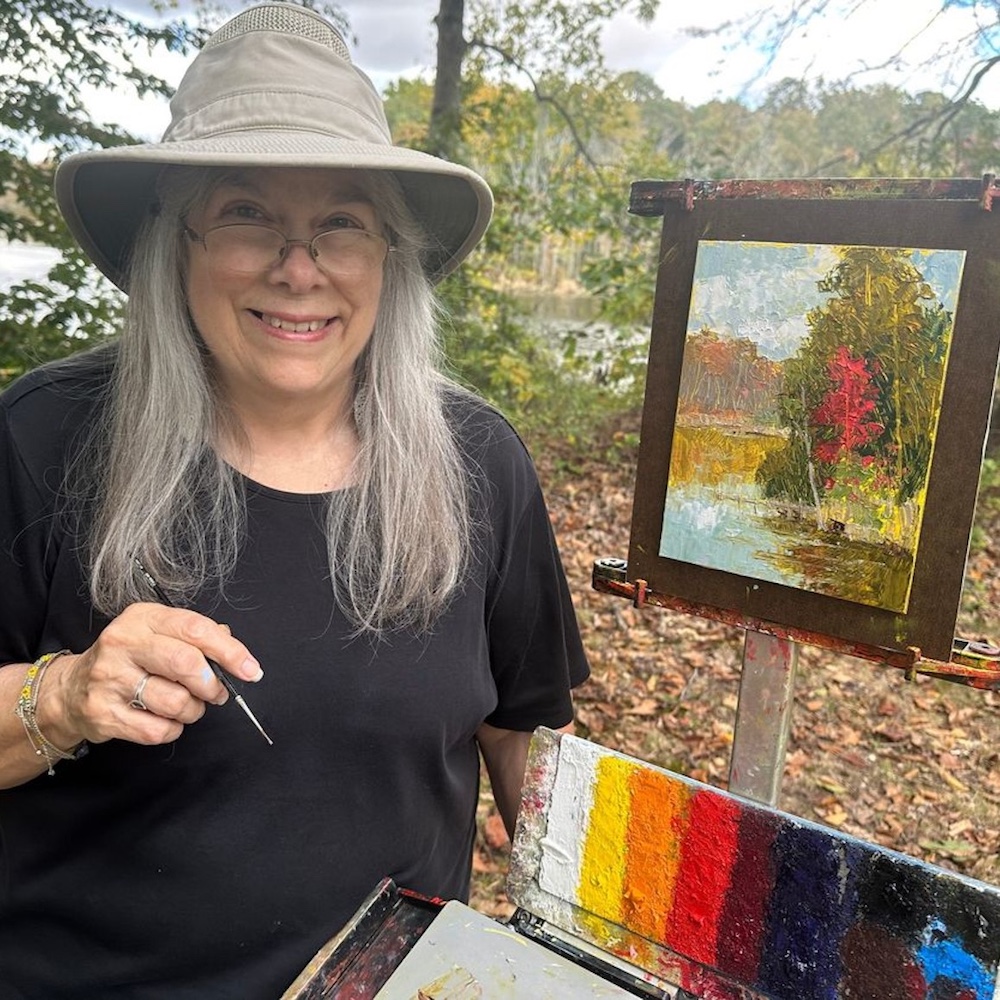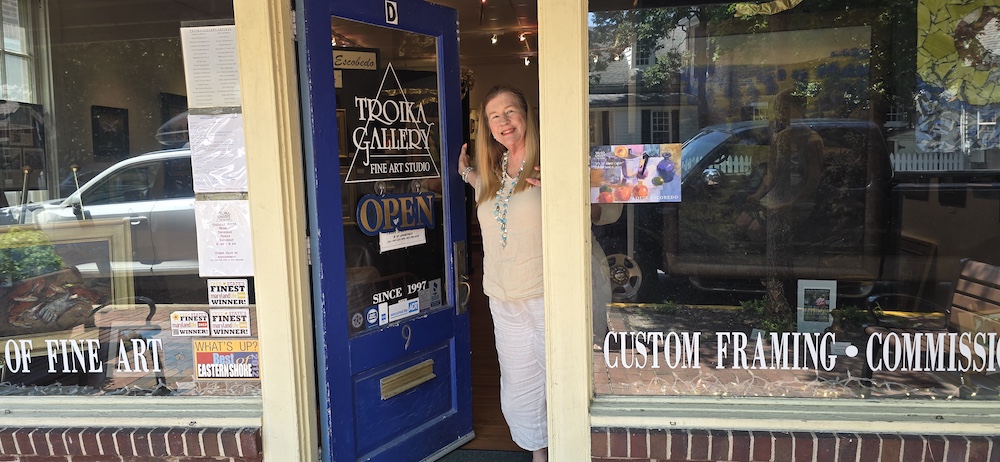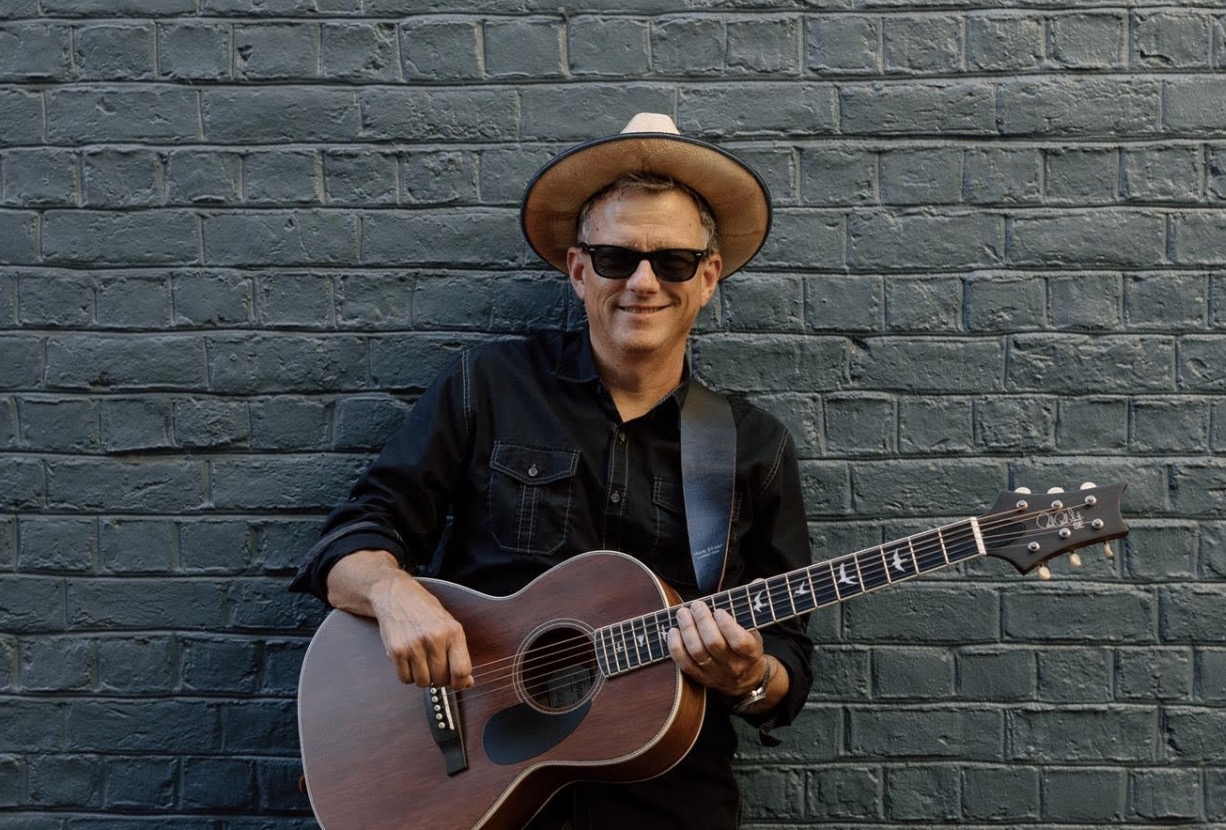This article is part of a special series celebrating the 2025 inductees into the Plein Air Easton Hall of Fame. Now in its second year, the Hall of Fame honors individuals, organizations, and patrons whose dedication, creativity, and support have helped shape Plein Air Easton into the nationally recognized event it is today.
When Hali Asplundh first set foot in Easton in the late 1990s, she didn’t expect it to be more than a weekend getaway. She and her husband, Scott, were looking for a second home—a quiet place with water views, some charm, maybe a lovely sunset or two. They came from the Philadelphia area and had already checked out the Jersey Shore, but nothing had quite clicked. Then they visited the Eastern Shore.
“It was in February—Valentine’s Day, actually…,” said Hali. “We drove from St. Michaels down to the ferry dock, and I looked across at Oxford and said, ‘Let’s go over there for dinner.’” The ferry wasn’t running, of course, so they had to drive all the way around. “We ended up at Pope’s Inn Tavern and had this great meal.”
That’s when she opened one of the local booklets you find around the Shore—she can’t remember much else about it, but she remembers the real estate advertisement. “There was this little house in Easton,” she said. “I showed it to Scott and said, ‘We need to go look at that house.’ And then, as Scott likes to say, ‘four months later, we owned it.’”
That house, and the house after that in Oxford, would become the base for years of memories, not just as a retreat, but as a way to connect with the area’s growing community. “Living here made us instantly understand the beauty of the area,” Hali said. “So I started looking for a picture of a sunset, because they’re just so glorious down there, right?”
What started as a hunt for a piece of sunset art to hang on the wall turned into conversations with local gallerists and artists. One of those conversations was with Nancy Tankersley, who mentioned she was working with a group hoping to bring a plein air festival to Easton.
“I thought it was an excellent idea,” Hali said. “I was instantly enamored, and we got involved from the start. We supported it that first year and every year after in one way or another.”
Even though neither of them was an artist, they were captivated by the creative process. They would walk the streets of Easton and Oxford during festival week, watching artists painting in real time. “I love driving down the road and seeing four or five easels in the same spot,” she said. “But every painting is slightly different—the angle, the color, the interpretation. I love that.”
They also loved the feeling of being present for something special—of seeing a piece of the festival take shape right before their eyes. One time, they were having lunch at the Robert Morris Inn when Hali noticed a woman painting on the patio next to them. “She was painting a couple under a big red umbrella—it was a hot day, I remember. She did such a masterful job. I took a picture of her painting, posted it, and later found out it won the grand prize. That was fun to see.”
Though their involvement was never about being seen, the Asplundh name is one many people know, especially in the Mid-Atlantic. Scott comes from a family that built one of the country’s largest tree service companies. It’s not something they ever led with, but in some ways, it fits. A respect for land and the natural world is part of what drew them to the Shore and part of what they’ve quietly supported ever since. They showed up, gave, and helped build the foundation that allowed the festival to grow. “We just adored it,” Hali said. “It’s something we made time for. Scott was always very busy, but he made time for that event.”
That appreciation deepened over time. What began with admiration turned into participation. At some point, they asked if there was a way to get more directly involved in supporting the artists themselves. That’s when they took on the Artist Choice Award—an honor voted on by the painters, and one that Hali and Scott have proudly supported ever since. “It became really dear to our hearts,” she said.
But their support wasn’t just financial—it was part of how they experienced the festival, year after year.”Most of their time during the event was spent in Oxford, where they felt most at home. They often arrived by boat, cruising to opening events or just soaking in the scenes from the water. Hali especially loved how the festival offered access to places most people never see. “That first year I went to an artist opening at one of the farms,” she said, “and I remember thinking what a wonderful way it was to see these hidden parts of the Shore.”
And the more time she spent there—on the water, at the farms, walking the small-town streets—the more closely she began to appreciate the craft of painting. “I remember once asking a local artist during a talk if he thought the light here was different,” she said. “He went off on this explanation about how it’s like a lampshade—the light holds. It’s bright but soft, and reflective in a way that’s hard to describe. He compared it to the south of France. Ever since then, I’ve looked at it through that lens.”
That way of seeing—of noticing things others might miss—stayed with her, even as their visits became less frequent. Scott’s health has kept them away in recent years, but their connection to the place hasn’t faded. They still own their home in Oxford, and Hali hopes to return soon, possibly with her daughter. “It’s kind of a cherished memory for us now,” she said.
She was surprised and touched when she received the call about the Hall of Fame honor. “I thought that was quite nice, actually,” she said. “Whether we were in the Hall of Fame or not, we would have continued to support it. We love it.”
And that love—for the light, the water, the land, the trees, and the art that emerges from it—has become part of Plein Air Easton’s story. Not everyone who shapes a festival picks up a brush. Some simply stand back, quietly, year after year, and make it possible for others to paint what they see.













 In “Creation,” the saxophone takes the solo lead in what would be the first viola in a standard symphony orchestra, joined in the opening overture by a clarion-call of woodwinds. Moving on to the “chaos before creation” movement, drumbeat rumbles with a jungle-like undertone were dismissed by early critics as the wild dissonance of “backward peoples.” More traditional symphonic passages in a pastoral patch suggest the creation of trees and greenery, followed by jazz-infused flute, oboe and horn solos that welcome animals to planet Earth.
In “Creation,” the saxophone takes the solo lead in what would be the first viola in a standard symphony orchestra, joined in the opening overture by a clarion-call of woodwinds. Moving on to the “chaos before creation” movement, drumbeat rumbles with a jungle-like undertone were dismissed by early critics as the wild dissonance of “backward peoples.” More traditional symphonic passages in a pastoral patch suggest the creation of trees and greenery, followed by jazz-infused flute, oboe and horn solos that welcome animals to planet Earth.